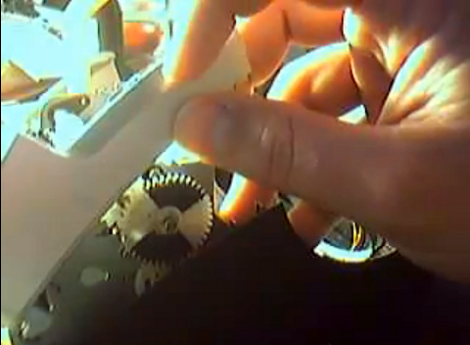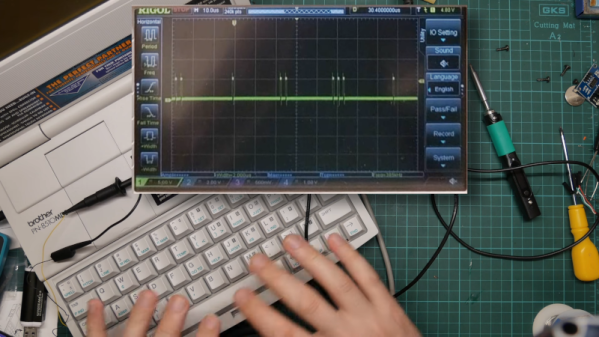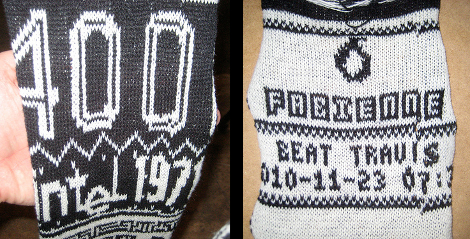It’s been a busy week in space news, and very little of it was good. We’ll start with the one winner of the week, Firefly’s Blue Ghost Mission 1, which landed successfully on the Moon’s surface on March 2. The lander is part of NASA’s Commercial Lunar Payload Services program and carries ten scientific payloads, including a GPS/GNSS receiver that successfully tracked signals from Earth-orbiting satellites. All of the scientific payloads have completed their missions, which is good because the lander isn’t designed to withstand the long, cold lunar night only a few days away. The landing makes Firefly the first commercial outfit to successfully soft-land something on the Moon, and being the first at anything is always a big deal.
brother5 Articles
Hacking A Brother Label Maker: Is Your CUPS Half Empty Or Half Full?
On the one hand, we were impressed that a tiny Brother label maker actually uses CUPS to support printing. Like [Sdomi], we were less than impressed at how old a copy it was using – – 1.6.1. Of course, [Sdomi] managed to gain access to the OS and set things up the right way, and we get an over-the-shoulder view.
It wasn’t just the old copy of CUPS, either. The setup page was very dated and while that’s just cosmetic, it still strikes a nerve. The Linux kernel in use was also super old. Luckily, the URLs looked like good candidates for command injection.
Continue reading “Hacking A Brother Label Maker: Is Your CUPS Half Empty Or Half Full?”
Porting CP/M To A Z80 Thing
It is hard to describe the Brother SuperPowerNote. It looks like a big old Z80-based laptop, but it says it is a notebook. The label on it says (with lots of exclamation marks) that it is a word processor, a communications system, a personal scheduler, and a spreadsheet organizer. Brother also promises on the label that it will “Increase your power to perform on the job, on the road or at home!” Plenty of exclamation marks to go around. The label also touts DOS or Windows, but [Poking Technology] didn’t want that. He wanted CP/M. See how he did it in the video below.
This is a very early laptop-style word processor with a floppy and a strange-looking screen. It also had serial and parallel ports, odd for a word processor, and probably justified the “communication system” claim on the label.
Hacking A Brother Thermal Printer To Use Non-OEM Continuous Rolls

You can get your hands on a Brother thermal label printer for $65-75. But if you don’t want to buy the Brother branded continuous feed paper for it you’re out of luck. Unless you pull off this hack which lets you use any thermal paper you want with a Brother QL-500 printer.
The printer is tied to the OEM paper because of a pattern printed on the back of the roll. It’s basically an encoder strip made up of black rectangles spaced at regular intervals. Surely there are other brands that come with this pattern on them, but if you want to use paper without it the secret is in moving the sensor that reads that strip.
The brilliant solution is to use one of the white feed-gears as an encoder wheel. [CheapSkateVideo] used a magic marker to paint two opposite quarters of the gear black. He then removed the optical sensor and placed it on the side of the case facing the wheel. It needs to be adjusted along the radius of that gear until the timing is just right, but once it is you’re ready to go. The sensor is a safety feature to ensure there is media in the printer. If there’s not you can burn up the print head so keep that in mind. See the explanation in the video after the break.
Continue reading “Hacking A Brother Thermal Printer To Use Non-OEM Continuous Rolls”
Knitting Machine Hack By Keypad Emulation
[Travis Goodspeed] and Hackaday alum [Fabienne Serriere] joined forces to develop an alternative interface for a knitting machine. They’re working with the Brother KH-930E machine. We saw [Becky Stern] use the same model by manipulating data on an emulated floppy drive for the device. [Travis] and [Fabienne] went a different route, and are emulating the keypad using an Arduino and a set of transistors.
They started by reverse engineering the keypad matrix using a continuity tester. Once they worked out the column and row layout they connected each to an NPN transistor. The Arduino sketch simulates button presses to set knitting bits for each row, with just one reset button for user input. This can be used to send data from a PC, or as a standalone system. Either way, it’s not only a great way to add functionality to the kitting machine, but a good example of how to interface with the keypad on just about any device.














